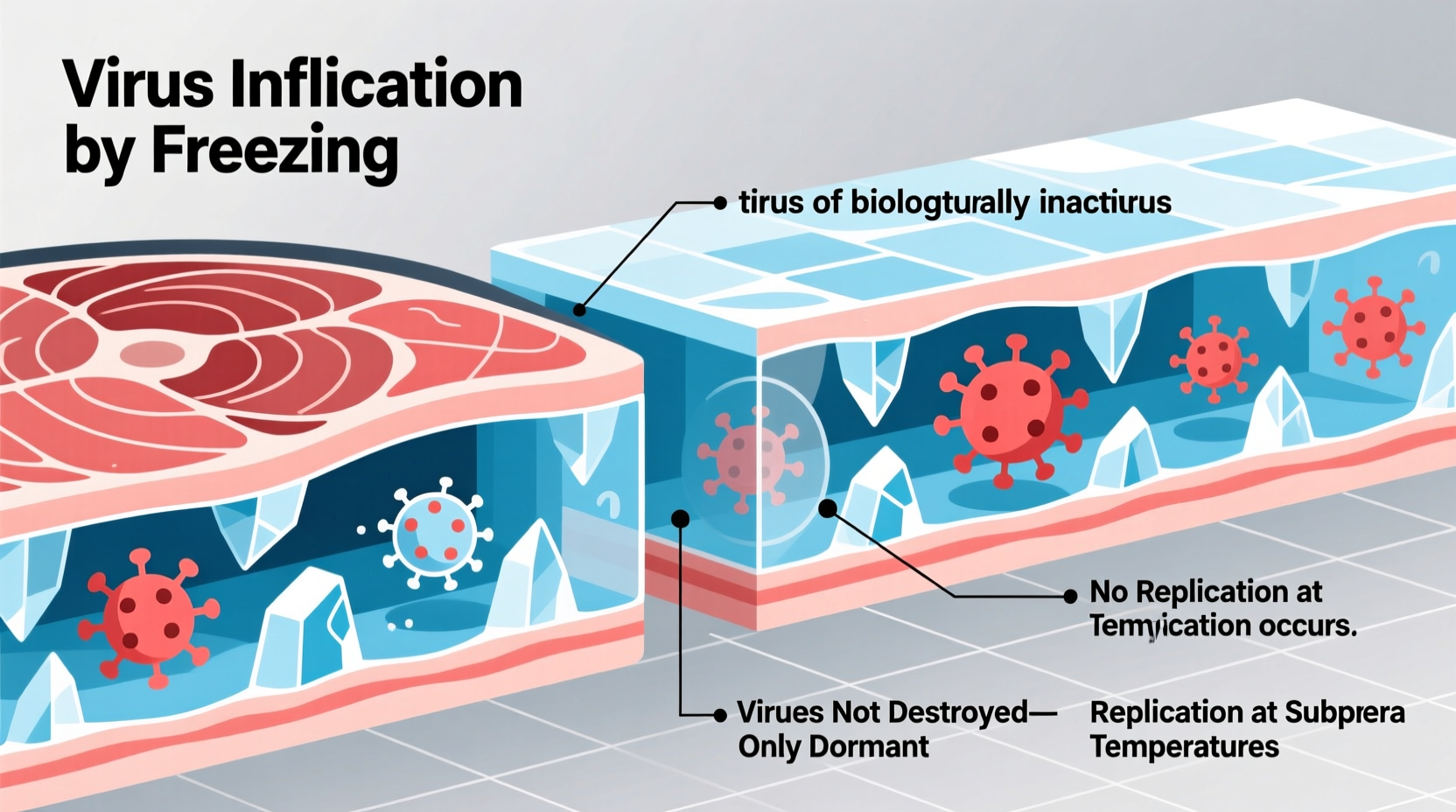The Science Behind Viruses and Freezing Temperatures
When food containing viruses is frozen, the cold temperature essentially puts viruses into suspended animation rather than eliminating them. Unlike bacteria, which can sometimes be slowed by cold temperatures, viruses don't metabolize or reproduce on their own—they require a living host cell. Freezing simply preserves their structure until conditions become favorable again.
According to the U.S. Food and Drug Administration, "Freezing to 0°F inactivates viruses, but they can survive indefinitely at these temperatures and may become active again once thawed." This explains why proper cooking after thawing remains essential for food safety.

Common Misconceptions About Freezing and Viral Safety
Many people mistakenly believe that freezing food makes it completely safe from all pathogens. This dangerous misconception leads to improper food handling practices. While freezing effectively stops bacterial growth, it doesn't eliminate existing pathogens—including viruses.
| Pathogen Type | Effect of Freezing | Required Elimination Method |
|---|---|---|
| Norovirus | Preserved indefinitely at -4°F (-20°C) | Cooking to 140°F (60°C) for 30 minutes |
| Hepatitis A | Survives for 18+ months in frozen conditions | Cooking to 185°F (85°C) for 1 minute |
| Rotavirus | Remains viable for years when frozen | Cooking to 131°F (55°C) for 30 minutes |
Practical Food Safety Guidelines for Frozen Items
Understanding what happens to viruses when food is frozen directly impacts how you should handle frozen products. Follow these evidence-based practices:
- Never consume raw frozen foods that could contain viruses (like berries or shellfish)
- Thaw properly in the refrigerator, not at room temperature, to minimize any potential viral reactivation
- Cook thoroughly after thawing—use a food thermometer to verify internal temperatures
- Wash hands and surfaces after handling frozen items that might contain viruses
The Centers for Disease Control and Prevention emphasizes that "freezing is not a recommended method for making food safe to eat," particularly for viral pathogens which demonstrate remarkable resilience in frozen environments.
When Freezing Provides Limited Protection
While freezing preserves viruses, it does offer some indirect safety benefits:
- Slows spoilage that might mask signs of contamination
- Prevents bacterial growth that could compete with or mask viral presence
- Maintains food quality until proper cooking can be performed
However, these benefits don't equate to viral elimination. The World Health Organization clearly states that "freezing alone cannot be relied upon to inactivate viruses in food." This context boundary is crucial—freezing maintains food safety only when followed by proper cooking procedures.
Best Practices for Handling Potentially Contaminated Frozen Foods
When working with frozen foods that might contain viruses, follow these professional kitchen-tested methods:
- Plan thawing time—allow 24 hours per 5 pounds of food in the refrigerator
- Use separate cutting boards for thawed items that will be cooked versus ready-to-eat foods
- Clean surfaces with appropriate sanitizers after contact with thawed items
- Cook to verified safe temperatures using a calibrated food thermometer
- Avoid cross-contamination by washing hands thoroughly after handling raw thawed products
Professional kitchens follow these protocols religiously, recognizing that understanding what happens to viruses when food is frozen is just the first step in comprehensive food safety.
Special Considerations for High-Risk Frozen Foods
Certain frozen food categories pose higher viral risks due to their production methods:
- Frozen berries—frequently linked to norovirus outbreaks when consumed raw
- Frozen shellfish—can concentrate viruses from contaminated waters
- Pre-cut frozen fruits—multiple handling points increase contamination risk
- Frozen ready-to-eat meals—risk if not properly heated by consumers
The FDA's outbreak investigation data shows multiple incidents where improperly handled frozen foods contributed to viral illness transmission, particularly when consumers assumed freezing had eliminated pathogens.
Key Takeaways for Home Food Safety
Understanding what happens to viruses when food is frozen transforms how you approach frozen food safety:
- Freezing preserves viruses rather than killing them
- Proper cooking after thawing is essential for viral elimination
- Follow safe thawing practices to minimize risks
- Treat frozen foods that will be consumed raw with special caution
- Never assume frozen equals safe—always follow proper food handling procedures
By incorporating these practices into your routine, you'll significantly reduce the risk of viral foodborne illness while properly leveraging freezing as a food preservation method rather than a safety treatment.











 浙公网安备
33010002000092号
浙公网安备
33010002000092号 浙B2-20120091-4
浙B2-20120091-4